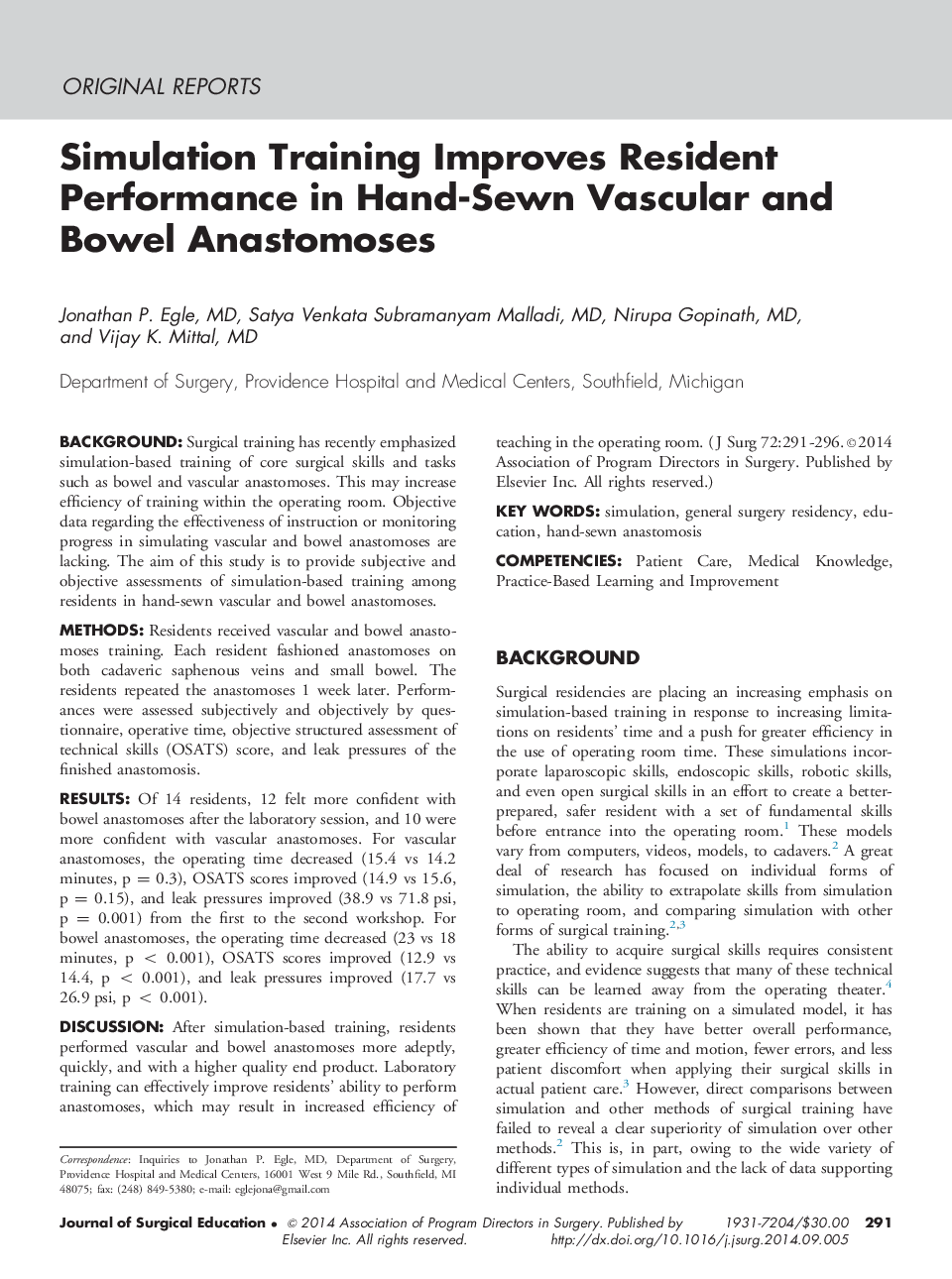| Article ID | Journal | Published Year | Pages | File Type |
|---|---|---|---|---|
| 4297670 | Journal of Surgical Education | 2015 | 6 Pages |
BackgroundSurgical training has recently emphasized simulation-based training of core surgical skills and tasks such as bowel and vascular anastomoses. This may increase efficiency of training within the operating room. Objective data regarding the effectiveness of instruction or monitoring progress in simulating vascular and bowel anastomoses are lacking. The aim of this study is to provide subjective and objective assessments of simulation-based training among residents in hand-sewn vascular and bowel anastomoses.MethodsResidents received vascular and bowel anastomoses training. Each resident fashioned anastomoses on both cadaveric saphenous veins and small bowel. The residents repeated the anastomoses 1 week later. Performances were assessed subjectively and objectively by questionnaire, operative time, objective structured assessment of technical skills (OSATS) score, and leak pressures of the finished anastomosis.ResultsOf 14 residents, 12 felt more confident with bowel anastomoses after the laboratory session, and 10 were more confident with vascular anastomoses. For vascular anastomoses, the operating time decreased (15.4 vs 14.2 minutes, p = 0.3), OSATS scores improved (14.9 vs 15.6, p = 0.15), and leak pressures improved (38.9 vs 71.8 psi, p = 0.001) from the first to the second workshop. For bowel anastomoses, the operating time decreased (23 vs 18 minutes, p < 0.001), OSATS scores improved (12.9 vs 14.4, p < 0.001), and leak pressures improved (17.7 vs 26.9 psi, p < 0.001).DiscussionAfter simulation-based training, residents performed vascular and bowel anastomoses more adeptly, quickly, and with a higher quality end product. Laboratory training can effectively improve residents’ ability to perform anastomoses, which may result in increased efficiency of teaching in the operating room.
